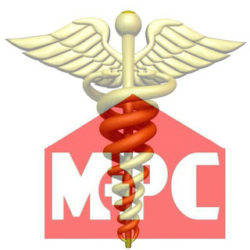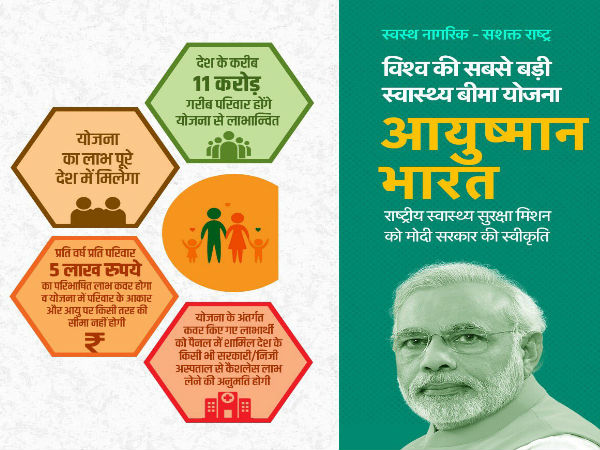Highlights
- Ayushman Bharat aims to provide healthcare facilities to over 10 crore families covering urban and rural poor
- PMJAY-Ayushman Bharat is the biggest government-sponsored healthcare scheme in the world
- The scheme offers an insurance cover of Rs 5 lakh, which will cover almost 50 crore citizens
Prime Minister Shri Narendra Modi, in his Independence Day speech of 2018, announced the launch of the Ayushman Bharat-National Health Protection Scheme (AB-NHPS). He said that the national health insurance scheme will be rolled out on a pilot basis in some states. The full-scale roll-out of the project is expected to be in September end.
On September 23, 2018, the Prime Minister Narendra Modi launched Ayushman Bharat, world’s largest government-funded healthcare scheme in Jharkhand’s .. capital Ranchi. The Centre’s flagship scheme has been renamed as PM Jan Arogya Yojana (PMJAY). The scheme will become operational from September 25 on the birth anniversary of Pandit Deendayal Upadhyay.
According to the various government websites, here is a look at what the health insurance scheme is all about. Who is the AB-NHPS aimed at?
The scheme is targeted at poor, deprived rural
families and identified occupational category of urban
workers’ families. So, if we were to go by the Socio-Economic Caste Census
(SECC) 2011 data, 8.03 crore families in rural and 2.33 crore in urban areas
will be entitled to be covered under these scheme, i.e., it will cover around
50 crore people.
AB-NHPS will have a defined benefit cover of Rs
5 lakh per family (on a family floater basis .. per year for secondary and tertiary care
hospitalisation. It will offer a benefit cover of Rs 5 lakh per family per
year. It will subsume the existing Rashtriya Swasthya Bima Yojana (RSBY),
launched in 2008 by the UPA government.
no cap
on the family size and age under the AB-NHPS. The scheme will be cashless and
paperless at public hospitals and empanelled private hospitals.
How will the entitlement
be decided?
AB-NHPM
will be an entitlement based scheme where it will be decided on the basis of
deprivation criteria in the SECC database. The beneficiaries are identified
based on the deprivation categories (D1, D2, D3, D4, D5, and D7) identified
under the SECC database for rural areas. For the urban areas, the 11
occupational criteria will determine entitlement. In addition, Rashtriya
Swasthya Bima Yojna (RSBY) beneficiaries in states where it is a ..
Rural area categories: The different categories
in rural areas include families having only one room with kucha walls and kucha
roof; families having no adult member between the ages of 16 years and 59
years; female-headed households with no adult male member between the ages of
16 years and 59 years; disabled members and no able-bodied adult member in the
family; SC/ST households; and landless households deriving major part of their
income from manual casual labour.
Also,
these families in rural areas having any one of the following will be
automatically included: households without shelter, destitute, living on alms,
manual scavenger families, primitive tribal groups, and legally released bonded
labour.
Urban area categories: For urban areas, 11
defined occupational categories are entitled under the scheme. Main source of
income related to household has been clarified in urban areas as beggars;
rag-pickers; domestic workers; street vendors/cobblers/hawkers/other service
providers working on the streets; construction workers/ plumbers/ masons/
labor/ painters/ welders/ security guards/coolies and other head-load workers;

